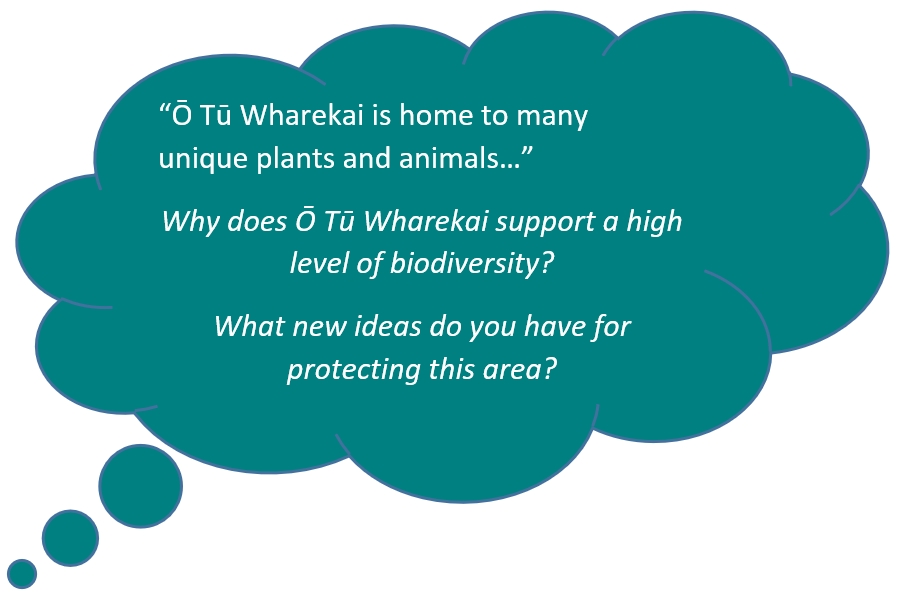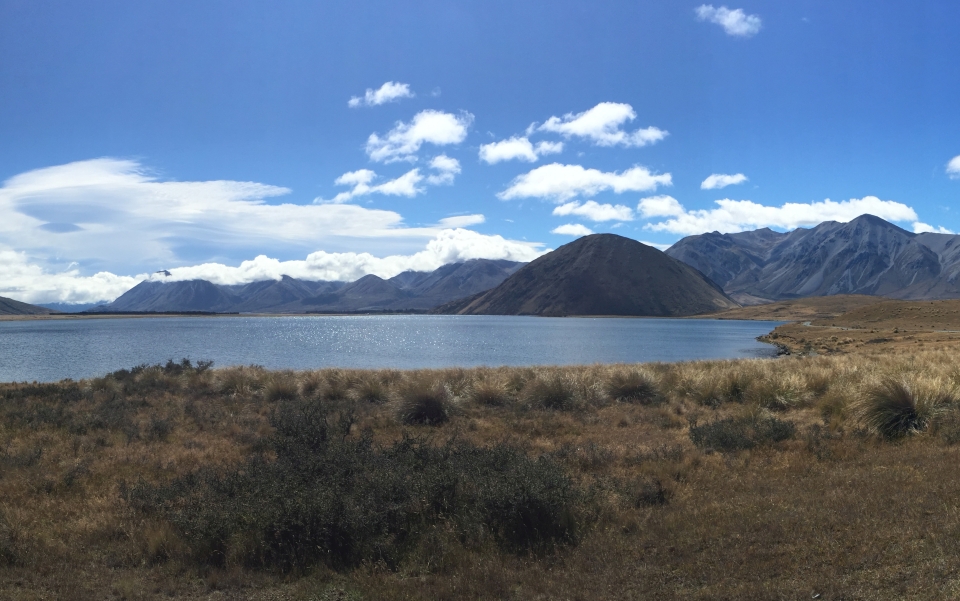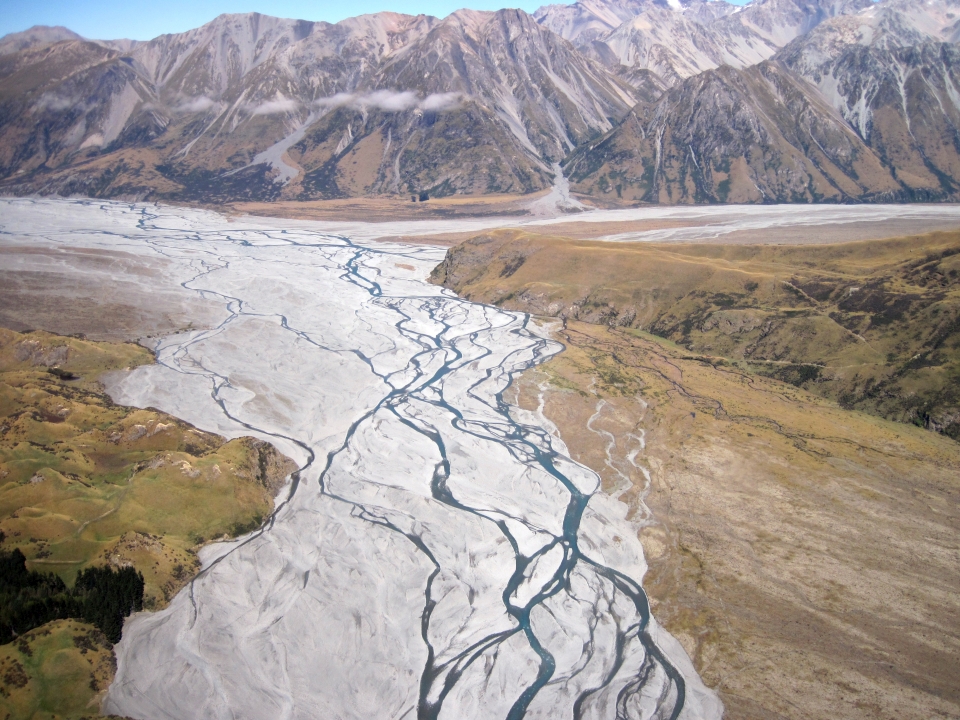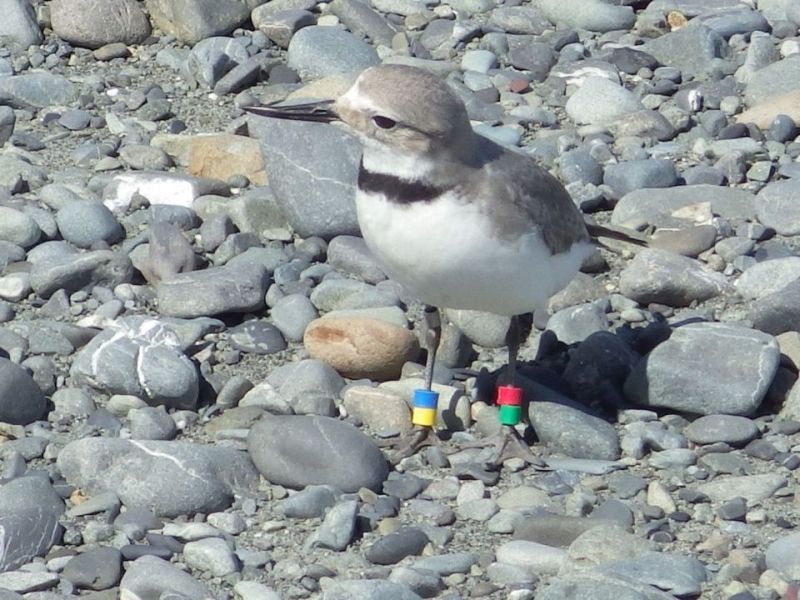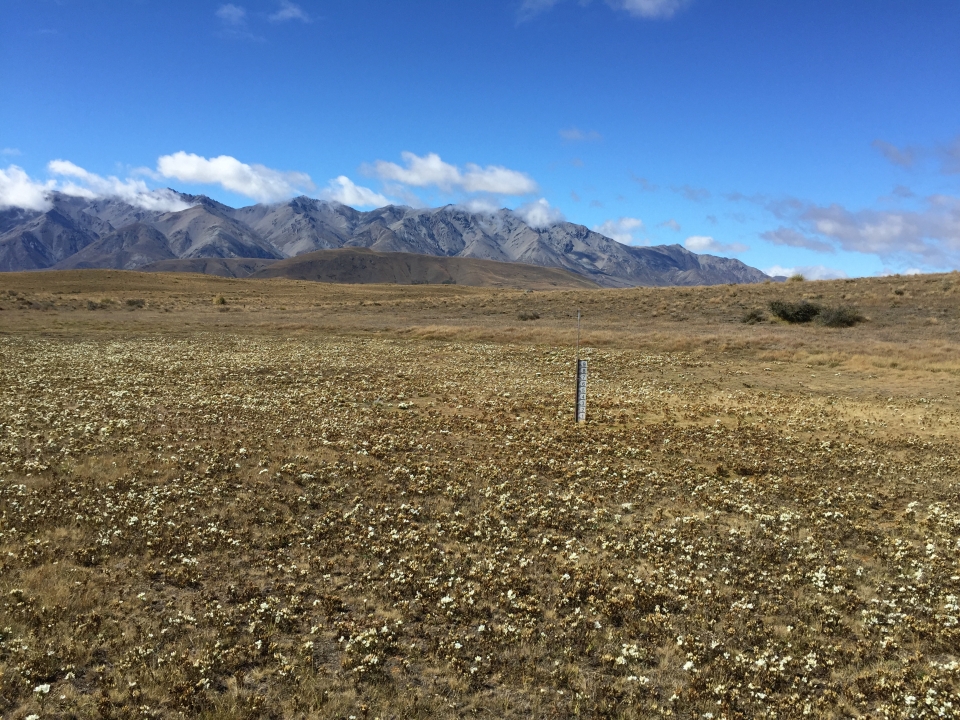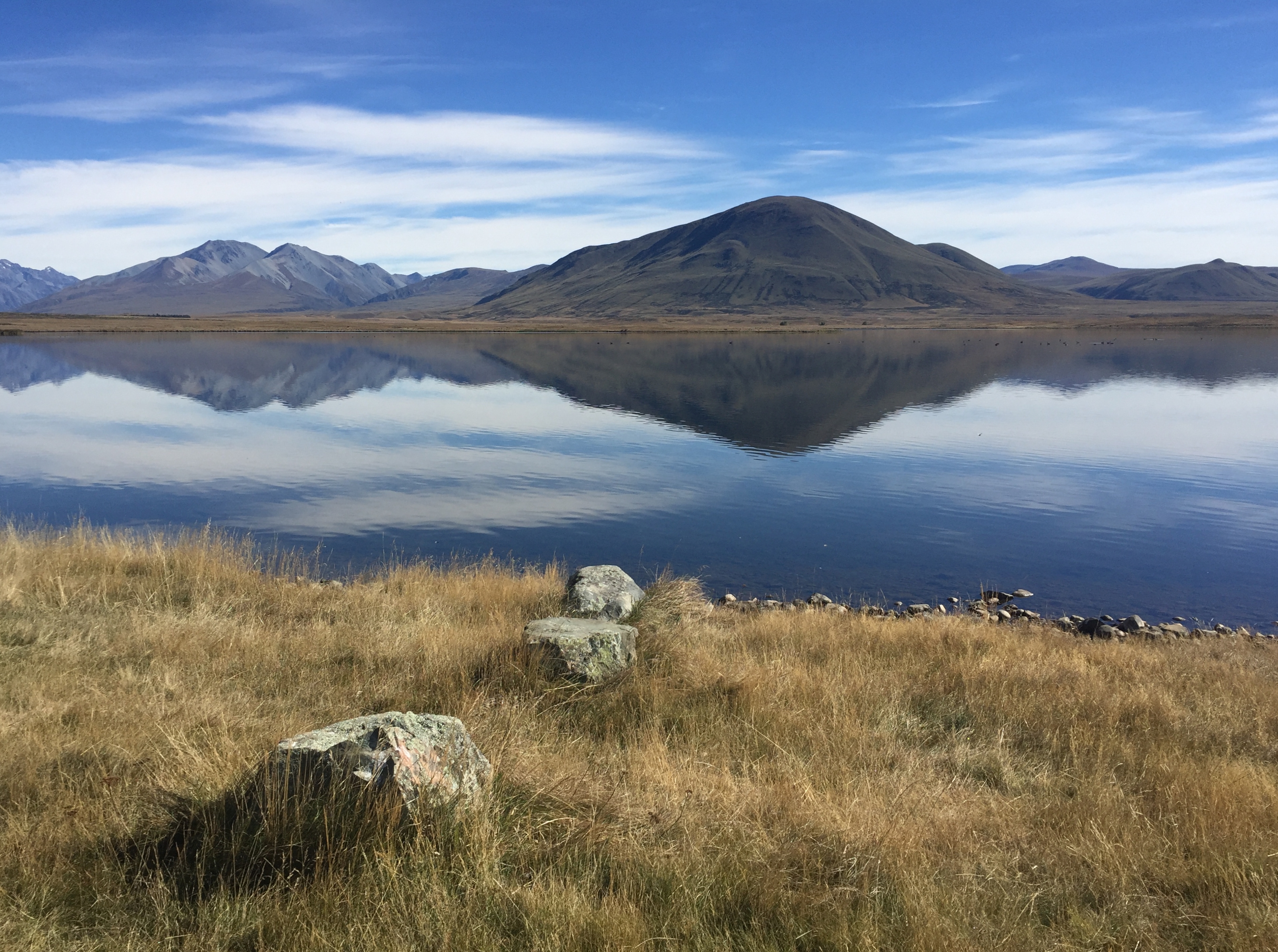Ō Tū Wharekai is important for wildlife. It is one of the three sites that make up the New Zealand Arawai Kākāriki wetland restoration programme. This project aims to:
- Protect wetlands.
- Increase our understanding of wetlands
The more we understand wetlands, the better we can look after them. Ō Tū Wharekai is part of the Hakatere Conservation Park. This park opened in October 2007. This area has lots of different habitats:
- braided rivers
- high country lakes
- ephemeral tarns
- streams
- swamps
- bogs.
Ō Tū Wharekai has been shaped by glaciers so has a variety of habitats. This means the area has a large variety of plants and animals.
Birds
There are over 30 bird species that use the lakes and wetlands. Ō Tū Wharekai includes the upper Rangitata River. This river is one of the most important breeding sites for the threatened wrybill/ngutu pare.
The Australian bittern/mātuku, and the Australian crested grebe/kāmana are also found at Ō Tū Wharekai. Other threatened birds include the Black fronted tern, Caspian tern, dotterel and black billed gull.
Threatened native fish include longfin eel/tuna and upland longjaw galaxias.
The area is also home to six threatened species of skink and one species of threatened gecko.
Ō Tū Wharekai is also home to tiny animals called zooplankton, that live in the water.
Plant life
Ō Tū Wharekai is an important site for kettle holes. These holes were carved out by glaciers and are not always full of water. Rare plants grow in these tarns. The swamps of Ō Tū Wharekai include a threatened sedge.
Ō Tū Wharekai also has a huge variety of plants living in the water, including freshwater algae.
There are many threatened plant species living in this area, some of which are found nowhere else. These wetlands also have some of the best examples of red tussock and pūkio wetlands in Canterbury.
You will need to look closely to find some of these plants and animals during your field trip to Ō Tū Wharekai.
Ready for a quiz? Try the "Biodiversity in Ō Tū Wharekai" interactive activity.
